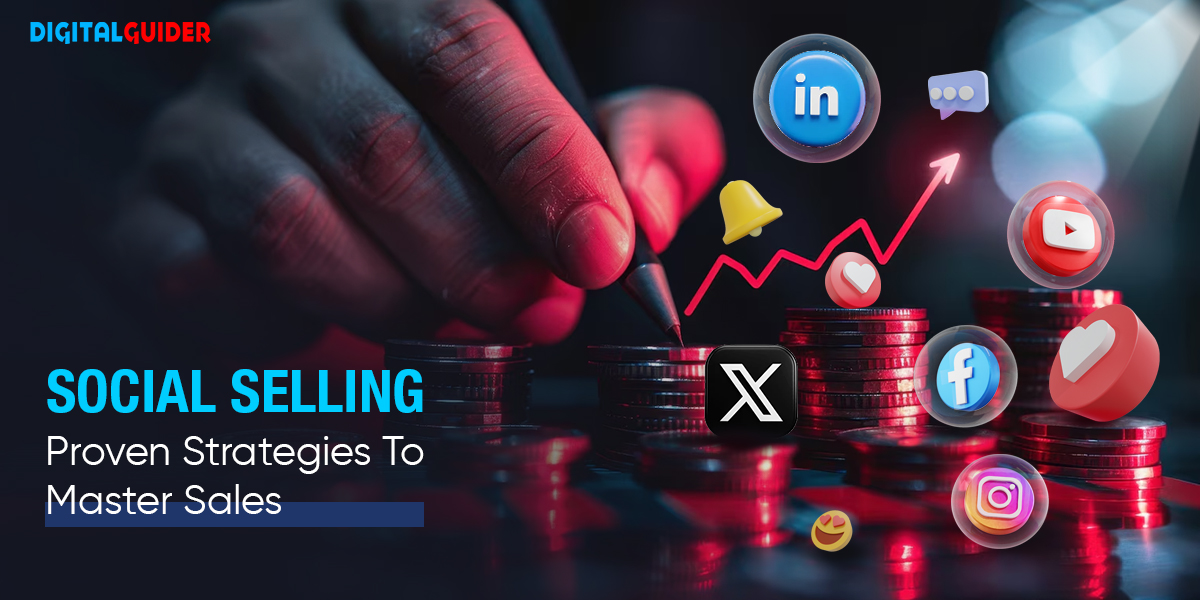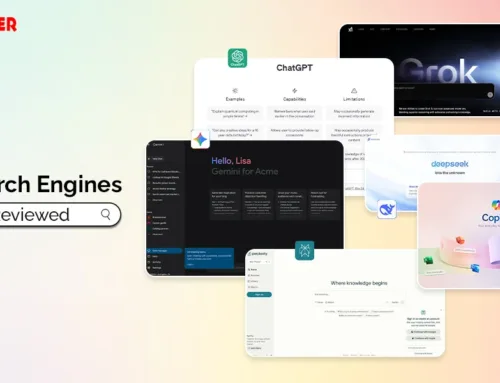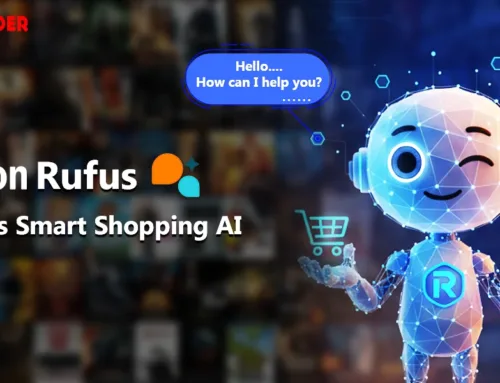📲Social media platforms give vast opportunities for brands and businesses to engage with their customers.
Suppose you sell handmade jewelry. Apart from listing it online, you share marvelous lustrous jewelry photos and stories on social media to promote your brand.
As people engage with your glossy jewelry posts, you reply and build connections. Over time, these interactions turn followers into customers.
📌This is social selling—building relationships online to boost sales.
Social selling has existed for years, yet many people and companies need clarification about this strategy.
Want to know what is social selling or how to sell on social media? This in-depth blog has compiled easy yet effective 11 social selling methods you must know and apply to your brand.
What Is Social Selling?
Social selling means using your social media connections to build trusted relationships and attract the right sales prospects. It is a tool that turns brand awareness into sales.
“Social selling allows you to laser-focus your prospecting and build relationships.”
— Jill Rowley, Social Selling Evangelist.
As a sales strategy, selling with social involves reaching out to prospective customers by connecting personally. Social selling allows brands to do so.
Over the years, the social selling method has gained significant popularity because of its multiple advantages. The primary benefits of social selling include:
- Increased pipeline
- Better, warmer leads
- Boosted win rates
- Enhanced deal sizes
Social selling is not only about connecting with new people and adding new contacts to your list. It is about connecting with prospects and presenting your brand as a solution to existing problems. This helps you build trust and create a rapport with your prospective customers.
Why Opt For Social Selling?
One of the most compelling reasons to use this digital marketing strategy is the low-cost approach of social selling platforms, combined with their adaptability.
As per LinkedIn, 78% of salespeople who use social media outperform their peers who don’t, and social selling helps sales leaders achieve better results.

Traditional Selling Vs. Social Selling
| Basis | Traditional Selling | Social Selling |
| Approach | Cold calling, direct mail, and face-to-face meetings | Building relationships and trust through social networks |
| Communication | One-way, primarily sales-focused | Two-way, engaging and value-focused |
| Customer Targeting | Mass marketing, less personalized | Highly targeted, based on buyer personas and behaviors |
| Sales Cycle | Often longer due to cold leads | Shorter due to warm, engaged prospects |
| Tools Used | Phone, email, in-person meetings | Social media platforms (LinkedIn, Twitter, etc.) |
| Customer Research | Limited to public information and direct inquiries | In-depth insights using social media activity and engagement |
| Lead Generation | Reactive, relying on inquiries or referrals | Proactive, engaging with potential leads online |
| Trust Building | Relies on brand reputation and face-to-face interactions | Built through content sharing, thought leadership, and interactions |
| Cost | This can be higher due to travel, events, and direct marketing | Generally lower, leveraging digital tools |
| Performance Tracking | It is harder to measure and track | Easier with social analytics and engagement metrics |
11 Important Steps for a Successful Social Selling Strategy
1— Identify Your Audience Group:
Research your audience’s needs, interests, preferences, behaviors, and pain points, and learn where other businesses excel and where they fall short.
Watch how marketers interact with your shared target audience. You can share content relevant to your ideal customers. Market trends, company updates, and how-to guides can engage users and build authority if they speak to your target audience’s interests and challenges.
2— Choose The Right Platforms:
Focus on where your target audience hangs out. LinkedIn is great for B2B, while Instagram or Facebook might be better for B2C, depending on your industry.
For instance— Salesforce, a leading B2B software company🖥️, actively uses the LinkedIn page to build a strong brand presence. They regularly post content related to CRM software, business trends, and thought leadership and participate in discussions.
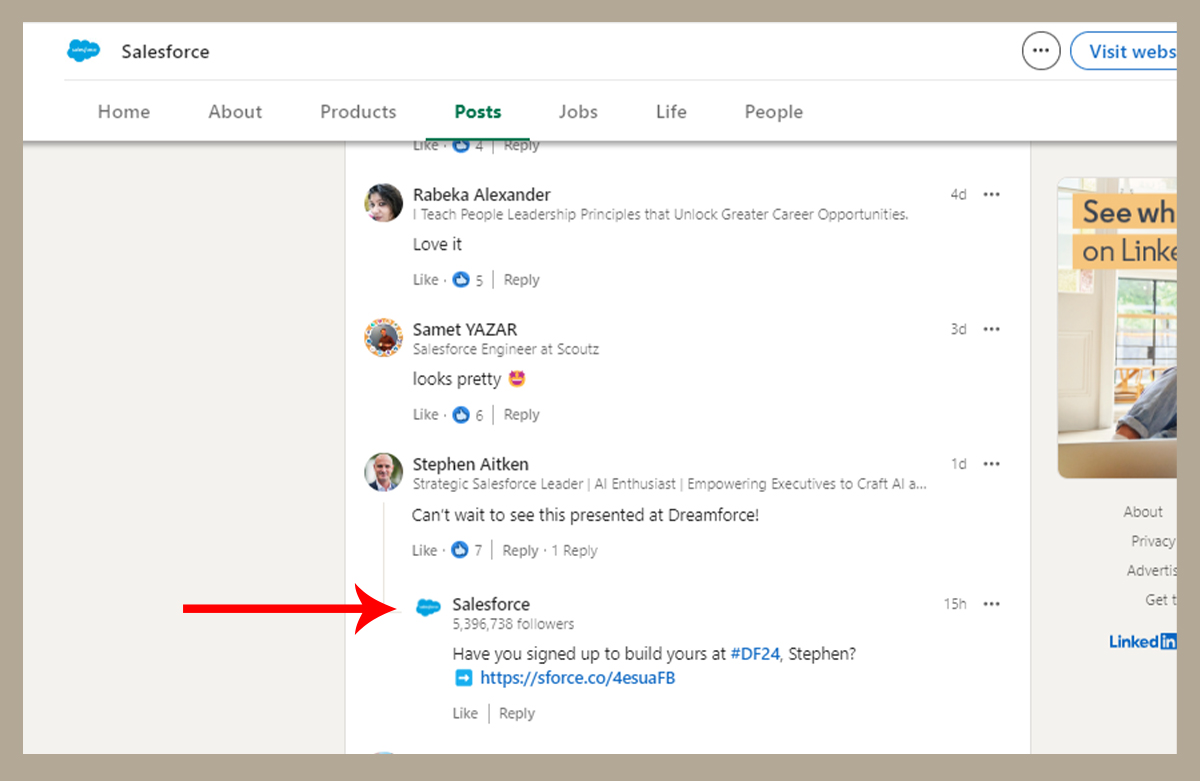
This engagement can establish credibility and drive social selling. On the other hand, B2C brands like Nike👟. They effectively use Instagram to showcase visually engaging content like product launches, athlete partnerships, and motivational posts.

The above brands are examples of how they choose the perfect platforms for the target audience, where they actually spend most of their time.
3— Optimize Your Social Media Profiles:
Make sure your social profiles are complete and professional and showcase your expertise. Think of them as your digital storefront.
Your social media profile is more than just your name and contact information; it’s an extension of your brand.
Ensure that your profile is complete and accurately reflects your professional identity. Include a clear profile picture, a compelling headline, and a detailed description of your skills and services.
4— Connect with Prospects
Utilize social media platforms like Facebook, LinkedIn, and Twitter to connect with potential prospects. Engage with their posts, join relevant groups or communities, and participate in discussions to build relationships.
For instance, if you want to connect with small business owners, you might join various LinkedIn groups and actively participate in intellectual group discussions, offering valuable advice and insights that showcase your expertise.
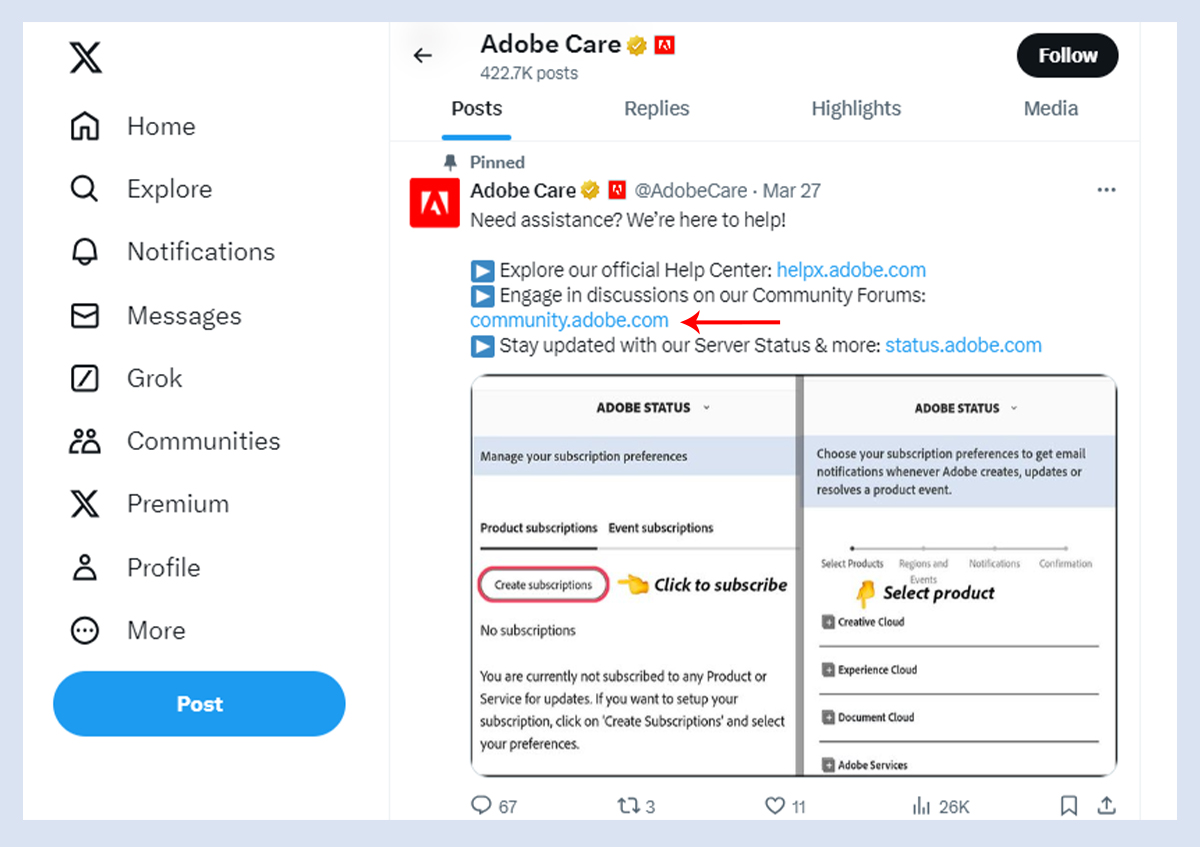

You can see above how the Adobe brand connects with its followers through its community forum & improves its connections.
5— Start with Real Conversations
Engage with your prospects as if you’re meeting them in person. Comment on their posts, share your thoughts, or ask open-ended questions. This way, you connect personally, not just pitching a product or service.
Here’s a social selling example: If you’re interacting with a real estate agent, you could ask, “In what ways do you believe the market trends will affect your area this year?” This shows genuine interest in their perspective rather than trying to sell your services immediately.
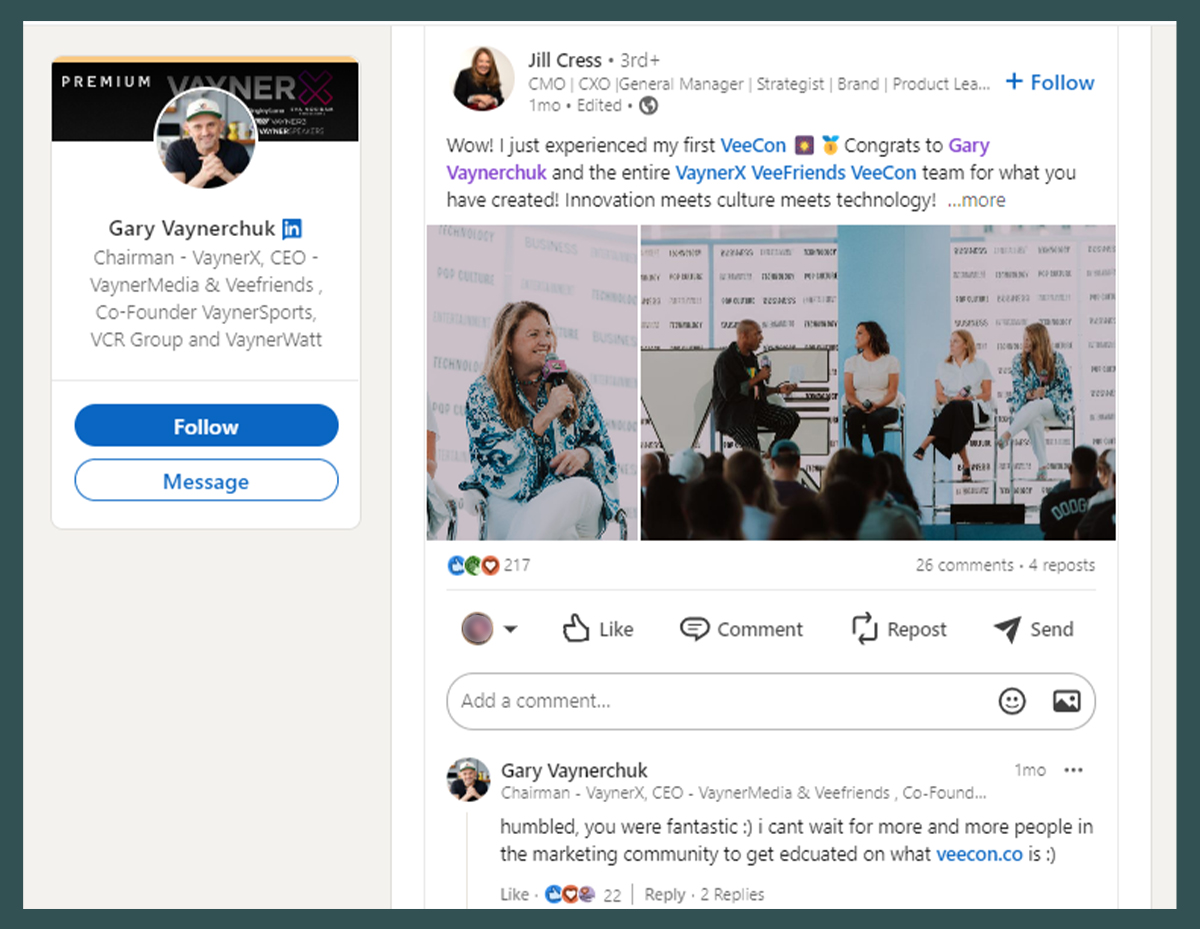
See how Gary Vaynerchuk, an entrepreneur and social media expert, responds with genuine comments that make some sense to the brands.
The point is that whenever you want to achieve successful social selling, you must invest time in genuine comments to engage with a target audience.
— Tips you can follow:
- Engage Personally
- Ask Open-Ended Questions
- Comment Thoughtfully
- Show Genuine Interest
This approach demonstrates a real interest in the individual’s perspective and fosters meaningful dialogue rather than pushing a sales pitch unnecessarily.
Sharing relevant, engaging content and providing value to your target audience helps you boost social selling.
For instance, if your business offers financial consulting services, you might share business blog posts, infographics, or case studies highlighting successful financial strategies, industry trends, or practical tips for financial management.
See how Goldman Sachs, a leading financial service provider in New York, shares insightful content on LinkedIn related to finance, strategy, market reports, financial trend analysis, and case studies on investment strategies.

This content sharing and relevancy position Goldman Sachs as a trusted expert in the financial consulting space.
— Tips you can follow:
- Offer Market Insights
- Share Financial Reports
- Highlight Success Stories
- Engage with Industry Data
By offering valuable content, you establish yourself as a knowledgeable resource, which can help build trust and keep your prospects engaged with your brand.
Also Read: How Scannable Content Rules the Internet? [A Beginners Guide]
7— Offer Best Solutions
Provide tailored products and services to address your prospects’ specific challenges. Instead of offering a one-size-fits-all solution, analyze each prospect’s unique needs and customize your offerings accordingly.
For example, IBM provides tailored cloud and AI solutions to various industries. When working with a retail business facing supply chain challenges, IBM offers a custom AI-powered supply chain management tool that optimizes inventory tracking and demand forecasting.

Here, they address the company’s specific pain points and showcase its ability to provide targeted, effective solutions that directly meet the prospect’s needs. This tailored approach shows you understand their needs and are prepared to offer solutions.
8— Follow Up With Prospects
Follow up with prospects to ensure their satisfaction and close the sale effectively. After providing a solution or proposal, maintain open lines of communication to address any remaining questions or concerns.
If a prospect shows interest in your product but hesitates to commit, follow up with a call or email to offer additional information, address any objections, and discuss the next steps.
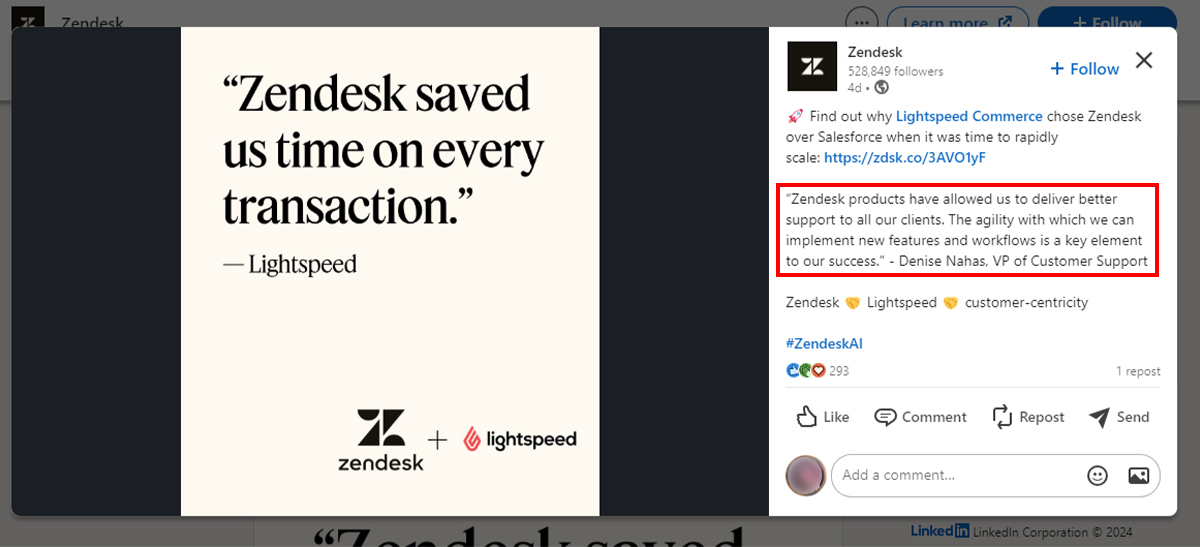
For example, Zendesk, known for its customer service solutions, excels in closing sales by maintaining strong follow-ups with prospects. After presenting their customer service software to a potential client, Zendesk follows up with personalized emails or phone calls, addressing concerns and offering demos or case studies.
They ensure that prospects fully understand how the product can meet their needs, helping them make a confident decision to purchase.
— Tips you can follow:
- Personalized Follow-Up
- Address Objections
- Support Customer Decisions
- Offer Next Steps
You need to keep this in mind to grow your sales, and after-sales services are also crucial for further successful sales.
Incorporate a mix of unique and popular hashtags in your social media posts to increase visibility and engagement. For example, suppose you’re posting about a new product launch.
In that case, you might use branded hashtags specific to your company, like #YourBrandLaunch, along with popular industry hashtags such as #Innovation or #TechTrends.

Let’s talk about Coca-Cola, which is known for effectively using engaging hashtags in its social media campaigns. For example, during the launch of the #ShareACoke campaign, Coca-Cola combined the branded hashtag (#ShareACoke) with popular ones like #CocaCola and #Happiness to increase reach and encourage user-generated content.
Combining unique and industry-related hashtags allowed them to engage a wider audience and create a viral movement across platforms. This helps your content reach a broader audience and connects you with users interested in relevant topics.
10— Use Social Listening Tools
Social listening tools can help you gather valuable insights from digital platforms to inform your business decisions. Tools like Hootsuite, Brandwatch, or Mention can track mentions of your brand, industry trends, and competitor activity.
For example, Netflix uses social listening tools to monitor conversations about its content and competitors. By tracking social media brand mentions and industry trends, Netflix quickly identifies what shows or genres are trending and adjusts its content strategy accordingly.
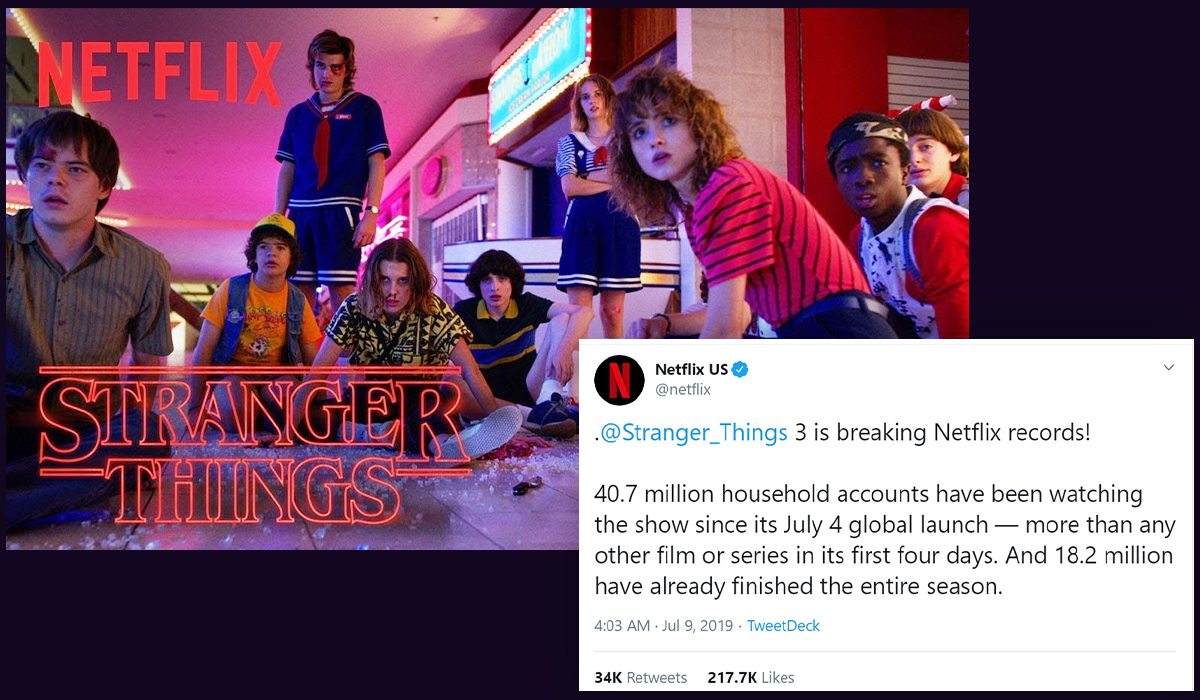
Here, Netflix’s research team noticed a surge in interest in nostalgic shows, and they promoted series like Stranger Things to capitalize on that trend. With Stranger Things, Netflix has cracked the winning formula for the modern-day marketing strategy with simplicity.
Tips you can follow:
- Monitor Brand Mentions
- Track Industry Trends
- Adjust Content Strategy
- Stay Ahead Competitively
You must monitor a growing conversation about a particular trend in your industry. In that case, you can use this information to tailor your content or adjust your marketing strategies to address emerging trends or concerns.
11— Stay Relevant
Social channels are constantly being flooded with content. As a social seller strategist, staying relevant is essential to being active on your accounts and consistently sharing new content. Find gaps in the posted content types and fill in those gaps with new and original content and messaging.
For example, during major sports events, Nike posts motivational content and highlights athletes wearing their products, ensuring they stay at the forefront of their audience’s minds.
To target the right groups, you must follow industry leaders and influencers. Stay current with trends and use relevant hashtags to target your content to the right people. Without consistency, your content will likely get buried in a sea of more relevant information.
To Sum Up:
Hope now you have an idea of how selling with social works and that you can take inspiration from the top brands mentioned above. Social selling and digital media can’t be overlooked for businesses and sales experts aiming to set themselves apart as successful and customer-focused. Social selling is hugely crucial for customer acquisition. It will remain an essential component of social ecommerce, making it a worthwhile investment to concentrate on and enhance your company’s approach to social selling.
Moreover, when you feel stuck in doing so, our professional social media experts help you achieve your social selling goal. Just mail us at info@digitalguider.com or call us @+1-307-209-3608
